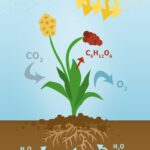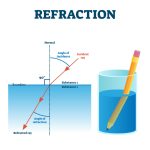Combustion is a chemical reaction in which a substance reacts with oxygen gas, producing heat and light. Combustion reactions are exothermic, which means that they release energy in the form of heat. Combustion reactions are important for a variety of applications, such as energy production, transportation, and cooking. This paper will discuss combustion reactions and provide examples of chemical formulas.
The Combustion Reaction: Class 8 Science: Chapter 8
The general equation for a combustion reaction is:
Fuel + Oxygen → Carbon dioxide + Water + Energy
The fuel is usually a hydrocarbon, which is a compound consisting of carbon and hydrogen. The oxygen gas is typically from the air. During the reaction, the hydrocarbon is oxidized, or burned, and produces carbon dioxide and water vapor. The energy released during the reaction is usually in the form of heat and light.
Examples of Combustion Reactions
- Methane Combustion Reaction
Methane, which is the main component of natural gas, has the chemical formula CH4. The combustion of methane can be represented by the following equation:
CH4 + 2O2 → CO2 + 2H2O + Energy
In this reaction, one molecule of methane reacts with two molecules of oxygen gas to produce one molecule of carbon dioxide and two molecules of water vapor. The energy released during the reaction is used as a heat source, for example, in a gas stove or furnace.
- Propane Combustion Reaction
Propane is a hydrocarbon that is commonly used as fuel for heating and cooking. Its chemical formula is C3H8. The combustion of propane can be represented by the following equation:
C3H8 + 5O2 → 3CO2 + 4H2O + Energy
In this reaction, one molecule of propane reacts with five molecules of oxygen gas to produce three molecules of carbon dioxide and four molecules of water vapor. The energy released during the reaction can be used to provide heat for cooking or to generate electricity in a power plant.
- Ethanol Combustion Reaction
Ethanol is a type of alcohol that is used as fuel in some vehicles. Its chemical formula is C2H5OH. The combustion of ethanol can be represented by the following equation:
C2H5OH + 3O2 → 2CO2 + 3H2O + Energy
In this reaction, one molecule of ethanol reacts with three molecules of oxygen gas to produce two molecules of carbon dioxide and three molecules of water vapor. The energy released during the reaction can be used to power a car or other vehicle.
Conclusion
In conclusion, combustion reactions are important for a variety of applications, including energy production, transportation, and cooking. Hydrocarbons, such as methane, propane, and ethanol, are commonly used as fuels in combustion reactions. The products of combustion reactions are usually carbon dioxide and water vapor, along with energy in the form of heat and light.


















